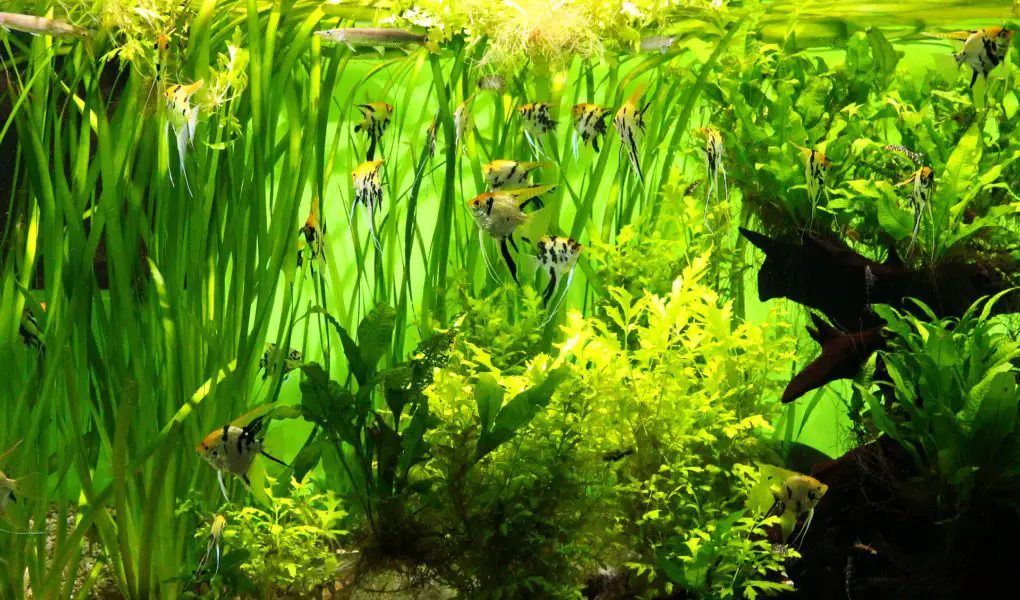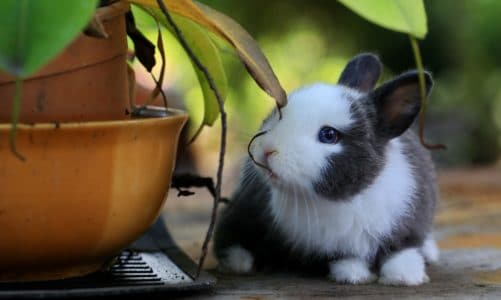A freshwater aquarium can be a wonderful addition to any home. Not only does it provide a point of interest for visiting friends, but can be a calming distraction from the world outside. Aquascaping with popular houseplants you can use in an aquarium will make it look vibrant and healthy.
Compared to saltwater, freshwater aquariums are easier and more cost-effective to set up and more forgiving when something goes wrong. Generally, things are just less finicky in a freshwater ecosystem.
If you are new to this hobby and wondering what houseplants you can use in an aquarium, this article will help you choose the right ones. The plants you choose will depend on your experience level, what kind of fish you have, or intend to get, and your own aesthetic preferences.
Aquatic plants are important for any balanced freshwater aquarium since fish need plants to be happy. It makes any tank more stable, healthy, and aesthetically pleasing. Around plants, your fish will behave more naturally and will have areas to retreat to, court, and breed.
When considering greenery for your aquarium you can choose between submerged and emergent plants. The emergent category of plants is those with an aerial advantage. The leaves of these plants are above the water, while all of the root systems are submerged.
Table of Contents
Submerged and emergent plants
Emergent houseplants
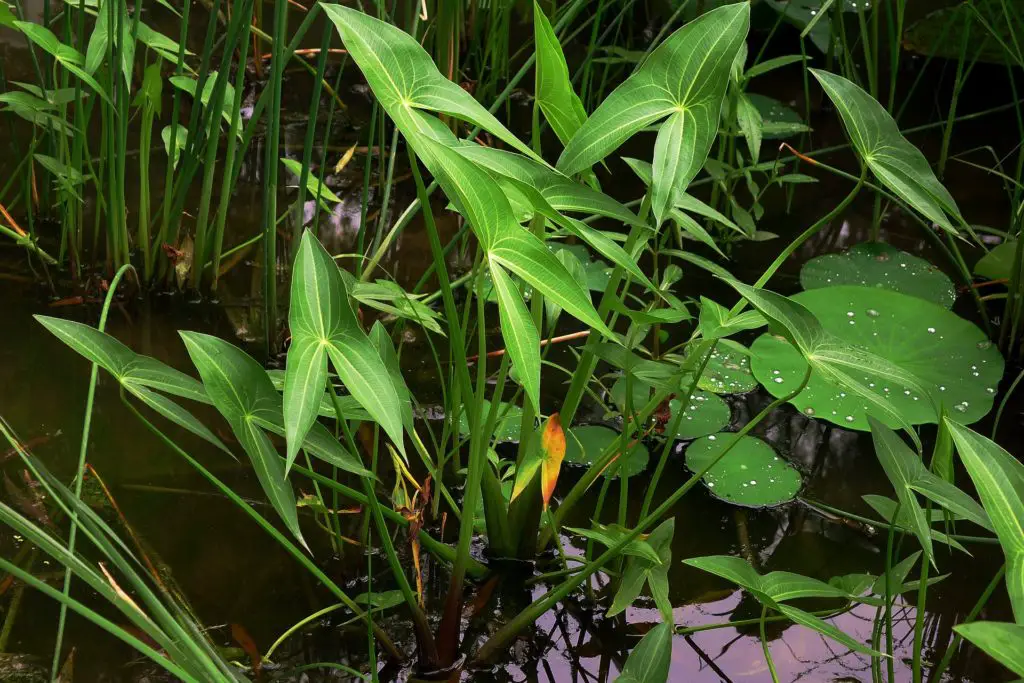
Not all houseplants for your freshwater aquarium need to be totally submerged. Emergent plants can add a different look and feel to your tank and is worth investigating. These emergent plants can consist of very popular houseplants you can use in an aquarium.
If you have sensitive fish like Apistogramma species, for example, emergent plants can be very beneficial. The reason is that emergent plants, provided with enough natural sunlight, are excellent water filters. These plants should have access to natural sunlight. Moving your freshwater tank to an area that receives ample natural sunlight would create optimal conditions for these plants to grow and thrive. The faster they grow the more oxygen they produce through their root system in the tank.
Examples of these plants include land plants, floating plants like water hyacinth, amphibious plants like Anubias, and aquatic plants like water lilies. Aquascape with any of the following popular houseplants:
Golden Pothos (Epipremnum aureum)
Swiss Cheese Plant (Monstera Deliciosa)
Umbrella Papyrus (Cyperus alternifolius)
Creeping Fig (Ficus pumila)
Ribbon plant/ Lucky bamboo (Dracaena sanderiana)
Arrowhead Vine (Syngonium podophyllum)
We choose
All-in-one 10 pieces Live Aquarium Plants Bundle
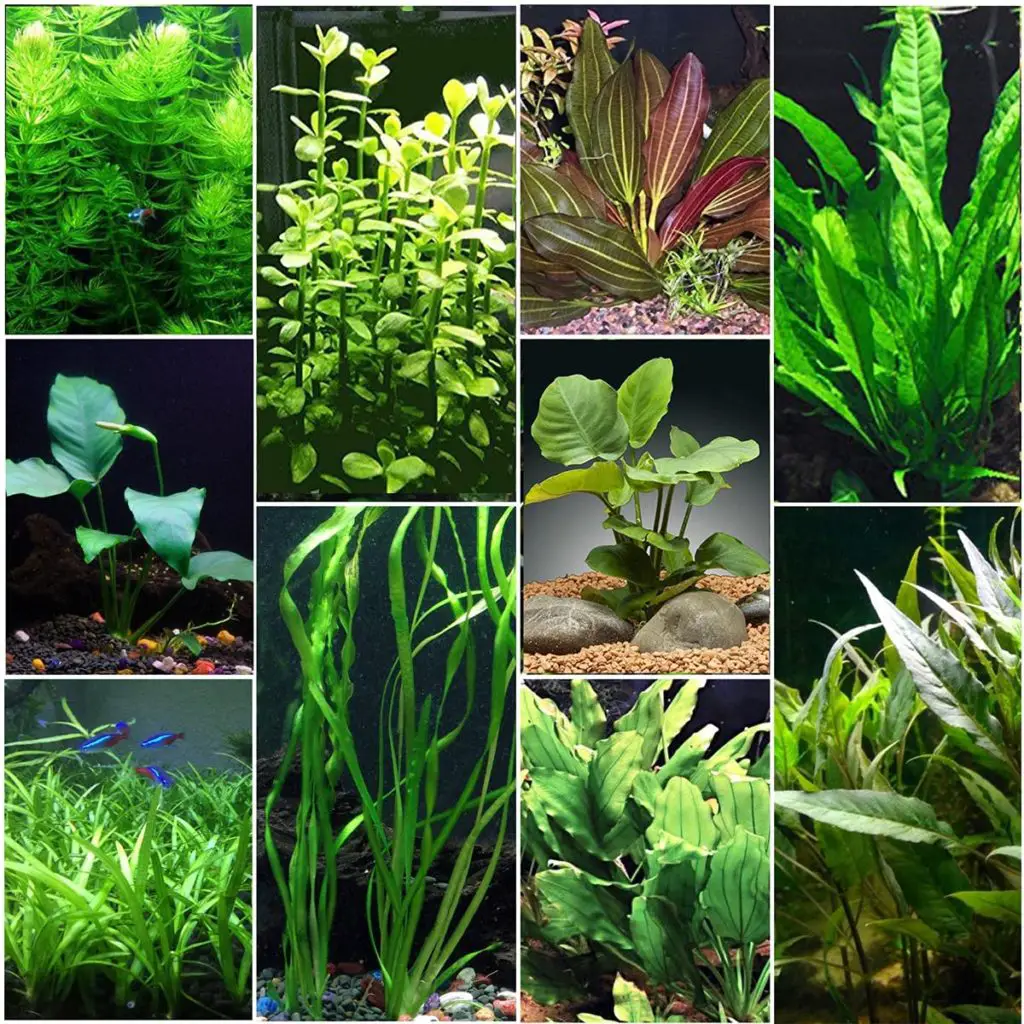
What’s great about these houseplants you can use in an aquarium?
- They grow fast
- Better oxygen levels in root systems
- Improved use of both carbon dioxide and light
- Biological activity in the root systems are improved
Submerged houseplants
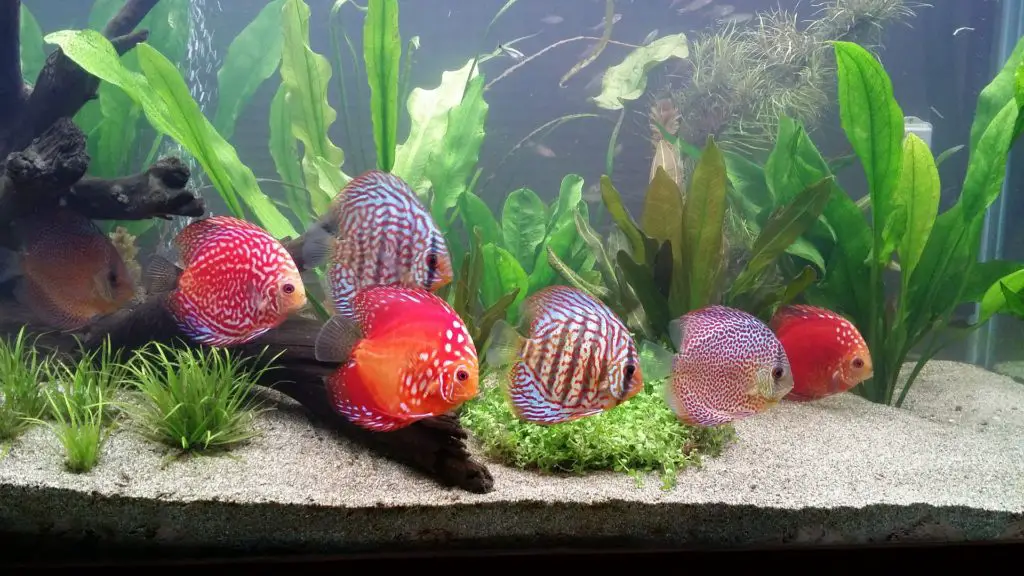
These houseplants you can use in your aquarium are easy to start with. They will help make your aquarium appear healthy and lively. 3 types of plant categories include the non-flowering mosses and ferns, ornamental and flowering Rosetta plants, and popular flowering stem plants.
Mosses and ferns
Java moss (Vesicularia dubyana)
One of the most common mosses you will find around. Easy to grow and hardy makes this plant perfect for beginners. Native to Southeast Asia this moss can be found growing on rocks, trunks, and along riverbeds. In a tank, this moss is good for providing protection to shrimp and fry, food for breeding fish and helps keep the tank healthy. Java moss does well under dimmed light. This moss can be secured with an elastic to driftwood or rock.
Java fern (Microsorium pteropus)
Java moss is a very popular freshwater plant for beginners. Varieties of this fern you will find in the shops include the narrow leaf, needle leaf, windelov, and trident.
It is most commonly chosen for its shape, its slow growth, and ease of propagation. The java fern is usually placed mid to background and the minimum tank size is 10 gallons. They come relatively cheap and are usually sold already attached to a piece of driftwood.
Rosetta plants
Dwarf Anubias (Anubias Nana)
These plants are great for beginners as they adapt quite well to any environment. Not growing very large, they look good in the front area of the aquarium. Their leathery dark green leaves also make them an attractive foreground plant. They grow rather slowly and can be positioned into a well-fertilized substrate. Otherwise, they do just as well on rocks and wood.
Amazon Sword (Echinodorus amazonicus)
Originally from Brazil, this amphibious bog plant makes a beautiful addition to any freshwater aquarium. It can grow fairly large and will often start to grow above the water level. Simply trim the leaves or roots if you want to prevent this from happening. These plants are ideally suited as mid t background areas of the tank. They like bright light, substrates rich in iron and soft water.
Pygmy Chain Sword (Echinodorus tenellus)
This short plant is perfect for ground cover or in front of the tank. With the right lighting, it can grow into a dense lawn. It is a great plant for beginners as it requires little upkeep. Not finicky at all, this plant thrives in various temperatures and pH levels. Some beautiful aquascapes can be created with this plant.
Cryptocorynes
The Wendt’s Cryptocoryne and Cryptocoryne wendtii are beautiful slow-growing plants that are part of the Cryptocoryne genus, called Crypts. The Cryptocoryne varieties are great for aquariums containing shrimp. Because of their more complex root system, they are usually kept by more experienced aquarists. These plants often experience what is known as Crypt Melt. When this happens they lose most of their leaves temporarily when first introduced in a new tank. This effect is usually seen when the plant experiences a temperate shock. No need to stress, since they return back to normal.
Dwarf lilies (Nymphaea stellate)
A much-loved freshwater aquarium plant. Native to India, dwarf lilies are easy to keep for beginners, requiring very little maintenance. They are on the smaller side, which makes them great filler plants to decorate the midground with. They are compact and their maximum leaf size is 12cm (4.7 inches). They do well in bright light.
Stem plants
Hornwort (Ceratophyllum)
Hornwort is ideal for beginners. This hardy plant and the super-easy grower can be used as a floater or can be anchored to the substrate. There are many species of this plant, but Ceratophyllum demersum is the most commonly used for freshwater aquariums. One of the main reasons for getting Hornwort is for the aesthetic appeal and because it photosynthesizes, providing oxygen to the tank. It also helps keep the water clean by absorbing some of the fish waste and nitrogen compounds.
Water Wisteria (Hygrophila difformis)
Perfect mid or background plants, the Water Wisteria grows to a max height of 50cm (20 inches). This plant needs space to grow. Its leaves grow up to 4 inches long so watch out. The pH for this plant needs to be kept between 6.5 and 7.5. It thrives under bright light and needs regular fertilizing and water changes.
Last thoughts houseplants you can use in an aquarium
Choosing from a variety of houseplants you can use in an aquarium is not only fun but educational. Research and learn as much as you can. Join an online hobbyist forum and exchange ideas. Your fish will love you for it!
Enjoyed this article? You might like these too:
Watch out! These popular houseplants are unsafe for cats.
Which houseplants require no light?
Which houseplants need misting?
10 Most oxygenating houseplants are natural air filters too.
These houseplants do not attract bugs.
Image credits:
Zoosnow via Pixabay
Vwald via Pixabay
David6239 via Pixabay
